The previous year, the Yellow Carvel had attracted complaints from residents who linked the venue to episodes of noise and vandalism (for example damage to garden gates). Under the headline "Lundin Links Rowdyism", the East Fife Mail of 14 April 1971 noted that police would be keeping watch on the dance hall in response to a petition from locals. Disturbances had been reported, especially at weekends, and a number of prosecutions had been made. It was, however, noted that these incidents took place outside of the venue itself and that the proprietor's license would be renewed. Nevertheless, the Yellow Carvel's days were numbered and before the end of 1972 the building had a new name and identity - more on that in the next post.
|
The previous post described the final days of La Scala cinema on Emsdorf Street, Lundin Links. The cinema closed in 1968, almost 50 years after it was built. However, the old La Scala building would remain on the site for another 20 years. After a period lying empty, the building was renamed 'Yellow Carvel' (after one of Sir Andrew Wood's ships) and food and dancing were offered there. The above advert dates from February 1972 - a time when many homes and businesses were without electricity for several hours a day due to an ongoing miner's strike.
The previous year, the Yellow Carvel had attracted complaints from residents who linked the venue to episodes of noise and vandalism (for example damage to garden gates). Under the headline "Lundin Links Rowdyism", the East Fife Mail of 14 April 1971 noted that police would be keeping watch on the dance hall in response to a petition from locals. Disturbances had been reported, especially at weekends, and a number of prosecutions had been made. It was, however, noted that these incidents took place outside of the venue itself and that the proprietor's license would be renewed. Nevertheless, the Yellow Carvel's days were numbered and before the end of 1972 the building had a new name and identity - more on that in the next post.
1 Comment
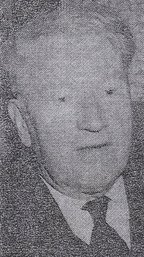 La Scala was a cinema and dance hall on Emsdorf Street in Lundin Links. The building of the cinema in 1920 was instigated by the tenacious Mrs Jessie Clayton, following the death of her husband in the First World War. The venue became central to both local life and to the entertainment for visitors to the area. Bill and Thomas Clayton - sons of Jessie - ran the business. Thomas had developed an interest in film during World War One, when he had been asked to show a film to servicemen and villagers in Crail. The brothers love of film grew and within a few years the Lundin Links business was joined by cinemas in Pittenweem, Elie, Windygates, Coaltown of Balgonie, Thornton, Strathmiglo and Auchtermuchty. Not only were films shown at La Scala, but dances, plays and other functions took place there. The East Fife Mail of 20 November 1968 told of how the Clayton Brothers would organise special shows in Lundin Links and that "in the summer of 1925 they took they East Fife Coast by storm when they introduced concert parties in the district." Outdoor shows would be held at the pavilion on Largo Pier or transferred to La Scala if the weather was poor. However, these shows went out of fashion before the Second World War, leaving the cinema and its twice-weekly dances as the focus of the business. Dances continued right through until the early 1960s (the above advert dates to 1963). They finally ceased in 1965 - the year that Bill Clayton died. Thomas kept the cinema going despite falling audiences and the growth of television. He found that what was once entertainment for all the family was now primarily popular with a teenage audience, although the annual children's screening on the first Saturday in January remained a local tradition. On 9 November 1968, Thomas Clayton closed his remaining cinemas in Lundin Links, Strathmiglo and Auchtermuchy and retired. The East Fife Mail article entitled "The Screen Goes Blank at La Scala", noted that Mr Clayton (pictured) was presented with a clock at the last screening prior to closure and stated that Mr Clayton himself had always been the projectionist there and had maintained all the equipment. A Mrs Helen Mann, who had been the cinema cashier for over thirty years, was presented with a bouquet of flowers. Thomas Clayton passed away in 1975. Following on from the previous post, this image is looking at the same street but facing in the opposite direction c1930s. This time we are on Station Road (now Links Road) looking towards Golf Road, with the Lundin Golf Club House on the far right. A lone figure is walking away from the station, which is out of shot. Zooming in on the buildings, we can see the recently built 'Corner House' is looking brighter and newer than its neighbour to the right - which pre-dates it by a few decades and contains the home, shop and workshop of golf club maker D.M. Patrick. In the mid-background are houses Manderlea and Westhall and to the far left is the building that is now Peacehaven. The Putting Green was right in the corner of the present golf course ground, at the junction of Golf Road and Station Road. The little white flags are just visible in the photograph below.
The golf course end of Links Road in Lundin Links has changed considerably over the decades. The top image (probably inter-war) shows the prominence of the railway station on the left and Aithernie House (now the Old Manor Hotel) on the right. The present day photograph presents a leafier, more residential scene. Lundin Links Station closed in 1965 and the buildings were removed a few years later. The street name was altered from Station Road to Links Road accordingly. Aithernie House would still have been in residential use at the time of the black and white image. It subsequently became a children's home and later a hotel. After World War Two further houses were built along this stretch of the street, opposite the golf course, which has remained a constant feature.
One person who lived through both the years when Lundin Mill was a village of hand loom weavers and the later years when the expanded village of Lundin Links became a favourite watering hole for visitors, was a Mrs Wallace of Emsdorf Road. She was interviewed in 1931 when she was in her nineties about the changes in the village. The Courier printed the interview on 12 December. Setting the context, the paper noted that this lady's grandfather would have been a young man at the time of the 1745 Rebellion and had tilled the soil of Fife over 200 years ago. Her father, like his father before him, worked the soil for almost three-quarters of a century. The report continues:
"And she has a host of memories of "Lundie". She knew the place before it assumed the "high-falutin'" name of Lundin Links and was known simply as Lundie Mill. "The meal mill's gone noo" she said plaintively, and relapsed into a recital of Lundie's former glories, when the sound of the shuttle was heard in every house. She told me of the rough roads of the old days; of how at one time Emsdorf Street was almost a stream; of the communal drying-green at the end of Emsdorf Road, where the women of the village gathered to perform the double duty of drying washed clothes and retailing the village gossip of the week." The writer described his interviewee as someone who looked like a person of 60 and spoke like someone of 40 and who was "broad-minded". Her views on younger people and current fashions were tolerant - she "had no adverse criticism to offer on present day fashions, bobbed or shingled hair, or cigarette smoking among ladies". Mrs Wallace herself (who lived in the cream terraced building shown on the left below), had lived under four sovereigns, and was considered the grand old lady of Lundin Links. When asked about her family's history of longevity, the 95-year-old put it down to "hard work and plain fare" and "plenty of good 'Lundie' air". Although the 1870s would be the twilight years for hand loom weaving locally, the decade begins encouragingly enough with the Courier noting on 2 June 1870 that "it is gratifying to observe an improvement in the weaving trade, and webs are being sent in both more regularly and in greater numbers, which is causing much more animation, especially in Lundin Mill, where the loom is still the principal employment of the inhabitants." In the Fife Herald of 20 June 1872, the move away from hand loom weaving is reflected, despite steady trade. It reports that the hand-loom branch of the weaving trade is "brisk here at present", particularly in terms of wide sheetings. It continues "of late hands have not been obtainable in numbers to complete work for the manufacturers who forward chains and wefts here to be made into cloth. Many old hands have left the loom, and nobody now learns the "ancient art", which is rapidly fading away." This sentiment was echoed the following year in the 18 December Fife Herald. Though work was coming into the village through the agents, wages had reached a low point. Weaving was no longer seen as a profitable occupation and it was dying out. The fact that no apprentices were now connected to this work was viewed as a "sign of the times".
Again in 1874, the feeling is of a disappearing art. Under the heading "The Loom", the 17 September Fife Herald speaks of a brisk level of business for the remaining weavers in Lundin Mill, yet at low wages. It states: "Supplied by webs here as we are through agents, work at the hand-loom trade is rife, but weavers have dwindled down in numbers greatly of late, and the "sough o' the shuttle" is now rarely heard. Wide sheetings are being woven by old hands, but wages are low." On 23 February 1877, the Courier stated that "handloom weaving is at present less active here than it was some time ago, and some kinds of webs are scarce, while wages are miserably low." And so, a long-standing industry, which had provided employment (albeit erratically) for generations died out. Lundin Mill in particular was on the brink of radical change with the upsurge in pleasure-seeking visitors attracted by the golf and sea-bathing. It must have been quite a culture shock to the older residents of the village when development took off around the turn of the century! The weaving trade locally entered the 1860s in a reasonable state, however, by 1861 things sounded more gloomy. In March, the Dunfermline Saturday Press spoke of hand loom weavers in both Lundin Mill and Largo "feeling the pinching effects of the depression in trade". Also it was reported that all were suffering, there was still some optimism, as: "Still a cheery spirit is manifested among the people, who hope that things will soon take a turn, and console themselves by quoting the old saying - "It is never darker than just before day"." The Dundee Courier of 19 October described trade as "very dull". It went on to say that "many hands are idle for want of employment" and although some had found employment in the potato harvest, this crop was not a good one and was now nearly complete, meaning that folk were keen to find work to do in their own home. A new day did dawn and on 1 July 1864, the Dundee Advertiser stated that in Lundin Mill "this branch of our national industry is very healthy at present. Work is abundant and wages have advance of late." In fact this period must have been a real high-point as later in the same month, the same paper said that "here and at Largo, the weaving trade looks animated. Work has not been so plentiful for many years, and what is equally cheering, the wages of the operatives have considerably advanced of late." Still the next year, the Dundee Advertiser was reporting on 12 September that in both Largo and Lundin Mill the weaving trade "wears a healthful look", and that:
"Huckabucks and sheetings are rife, and if one weaver could weave two webs at one time he would have no difficulty in obtaining work to perform. Many are, however, engaged at present at harvest work, and healthy rural labour being more desirable that indoor work, it will be after the potato lifting season before loom labour will be resorted to by most of our workers." This bright spell was not to last and in 1868, the Courier of 25 May found that in Lundin Mill "work is very scarce in this village, and several of our best hands have had to go about idle for want of work for several weeks". It continued to say that Lundin Mill had long been known for the production of broad sheetings, dowlases and huckabucks, but that these are all very scarce presently and "many hands have left the loom for other kinds of employment". The 'Largo Village Book' compiled in 1932, states, in the section on 'Industries' that: "Up until 1850 there was a loom in every house in Lower Largo, Drummochy, and Lundin, and much linen was made....The linen industry in Largo steadily decayed from the time of the introductions of power looms in Kirkcaldy and Dunfermline, until by the end of the 19th Century there were no hand looms left." The ubiquity of hand loom weaving had shaped the physical appearance of the villages. There were many typical weavers cottages. Typically, these would have low ceilings to which the loom could be attached and reasonably large windows to provide a good source of natural light. The cottages along Hillhead Street (shown below) and Emsdorf Street in Lundin Links are good examples. There were also many bleaching greens in the villages - sheltered grassy areas where linen would be stretched out in the sunshine to bleach. The 1850s probably marks the beginning of a long, slow decline in hand loom weaving in the area. In 1856, a tragic incident took place which may have been reflective of the state of the weaving trade locally at the time. The Fifeshire Journal of 27 November reported the double suicide of twin sisters Elizabeth and Janet White at Lower Largo. Aged around 30 years, both were weavers and considered to be "steady, sober and industrious girls". The report describes how they were found by a neighbour, hanging by rope tied "to the joists of the loom they wrought at". On 24 September 1859, the Dunfermline Saturday Press reported that in Lundin Mill "the weaving trade has not been so dull for some time here for some considerable time as just now. At Largo, the same complaint is heard." However, the decline was not to be a smooth one - rather there would be many ups and downs - and these were charted in the local press. The same paper on 15 October 1859 suggested an upturn in the trade and also provided an insight into the type of work typically carried out in Lundin Mill: "Broad sheetings, dowlases, and huckabacks, are the principal fabrics wrought here by our hand-loom weavers, and lately a scarcity of work was felt; but we are glad to observe that some manufacturers are again sending supplies of work to our village, the inhabitants of which in a great measure depend thereon for support." Huckaback was a centuries old weave, characterised by a diamond or honeycomb texture (see image below). Often used for towels, 'huck' is lightweight and fast-drying due to its uneven surface. Dowlas was a plain cloth, similar to sheeting but coarser - often used for overalls or aprons. By 19 November, the same paper gave more cause for optimism by telling of the "very considerable improvement" which had been "gradually creeping over trade matters". Now apparently new work of various sorts was available "through our agents, who are abundantly supplied by manufacturers."
This very rapid change from "dull" to "abundant" demonstrates how erratic work for weavers was at this time. This inconsistent state of affairs would continue into the following decade - as we will see in the next post. 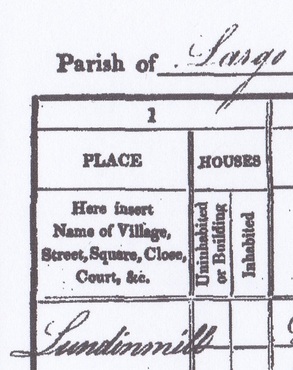 The Census of 1841 is considered to be the first modern census - the first to record every member of every household in a single event, organised centrally. It took place on the night of 6 June. The resulting information gives us the earliest detailed insight into the population of Largo, with particular focus on what these people did for a living (as this was one of the few questions asked). There were around 2,500 individuals in the Largo Parish in 1841. Within that total, 499 were recorded in Lundinmill (in 82 houses), 156 in Drummochy (in 22 houses), 395 in Kirkton of Largo (in 81 houses), 109 at Temple (in 21 houses), and 76 in the 'country' (in 13 houses). The remaining people were recorded as living in 'Largo'. Overwhelmingly, the answer to the question about whether you were born in the county was 'yes'. Among the handful of people who answered 'no' were the Dand family. David Dand was the manager of the Spinning Mill at Largo. He, his wife and four children had been born elsewhere in Scotland. Only a very small proportion of the population were over the age of 70. Considering this was a time before the arrival of the railway and all the opportunities that it brought, traditional occupations feature heavily. Lundinmill mainly had a population of hand loom weavers, as well as a fair few agricultural labourers and a handful of specialist occupations such as tailor, milliner, baker, shoemaker, miller, mason, teacher, toll keeper and road surveyor. The Temple was also mainly a settlement of weavers but with a few fisherman thrown in. Largo was only slightly more diverse - with most people still connected to the linen trade, either as hand loom weavers, flax dressers or flax spinners. Other occupations included agricultural labourers, wrights, shoemakers, engineers, publicans, stone masons, servants and of course several fisherman. A significant number of people were described as 'paupers'. Over the next few posts, the local hand loom weavers will be looked at in more detail. The growing of flax by farmers in the area, made the manufacturing of linen the parish's main industry, employing much of the local population. A quick comparison of the beach at the Temple end of Lower Largo - c1950s and present day. The two images are not radically different. Most of the buildings remain the same, with a few additions and alterations. The popularity of paddling in the sea and exploring the rockpools endures. The railway line (closed 50 years ago this year) which once ran behind the houses is now part of the Fife Coastal Path. This pathway stretches for 117 miles from the Forth Estuary to the Tay Estuary. See link below for more information:
http://www.fifecoastalpath.co.uk/ |
AboutThis blog is about the history of the villages of Lundin Links, Lower Largo and Upper Largo in Fife, Scotland. Comments and contributions from readers are very welcome!
SearchThere is no in-built search facility on this site. To search for content, go to Google and type your search words followed by "lundin weebly". Categories
All
Archives
July 2024
|
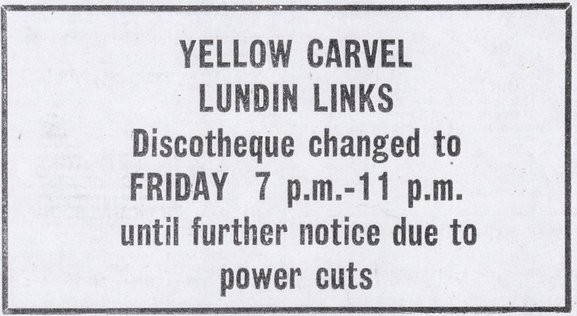
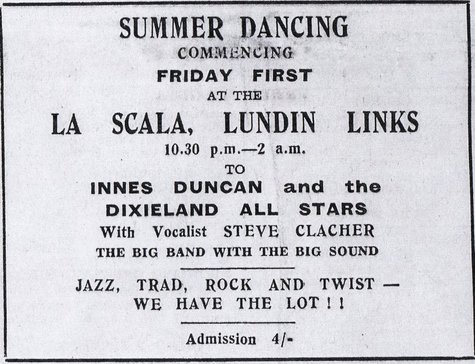
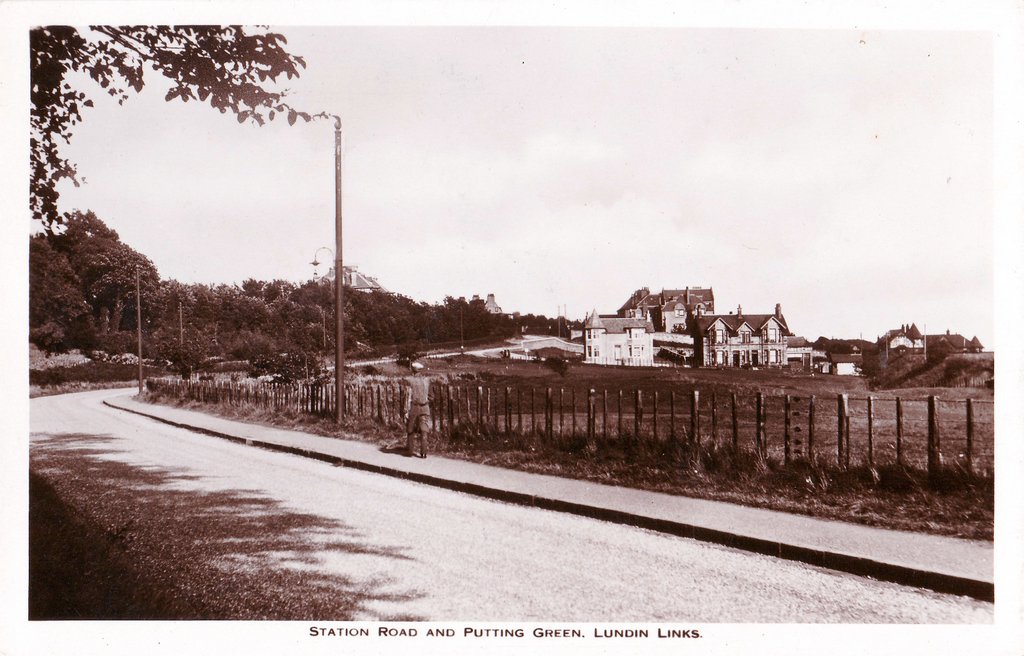

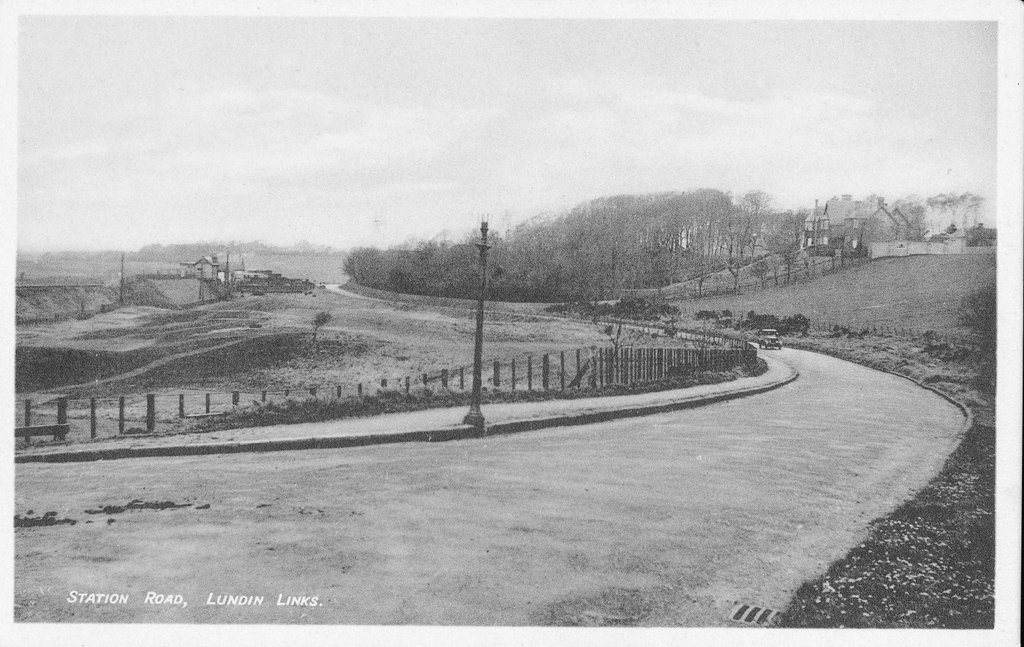
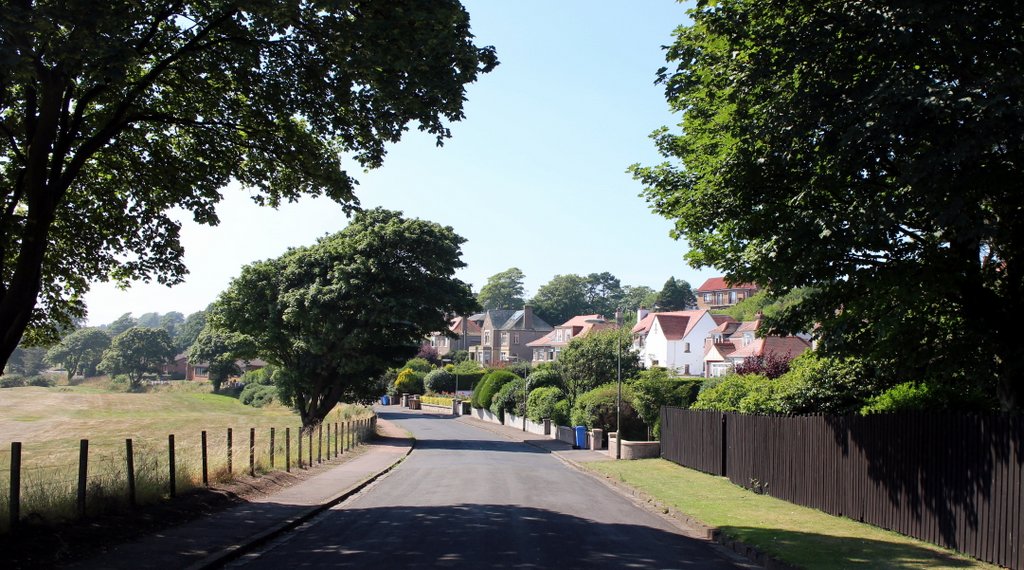
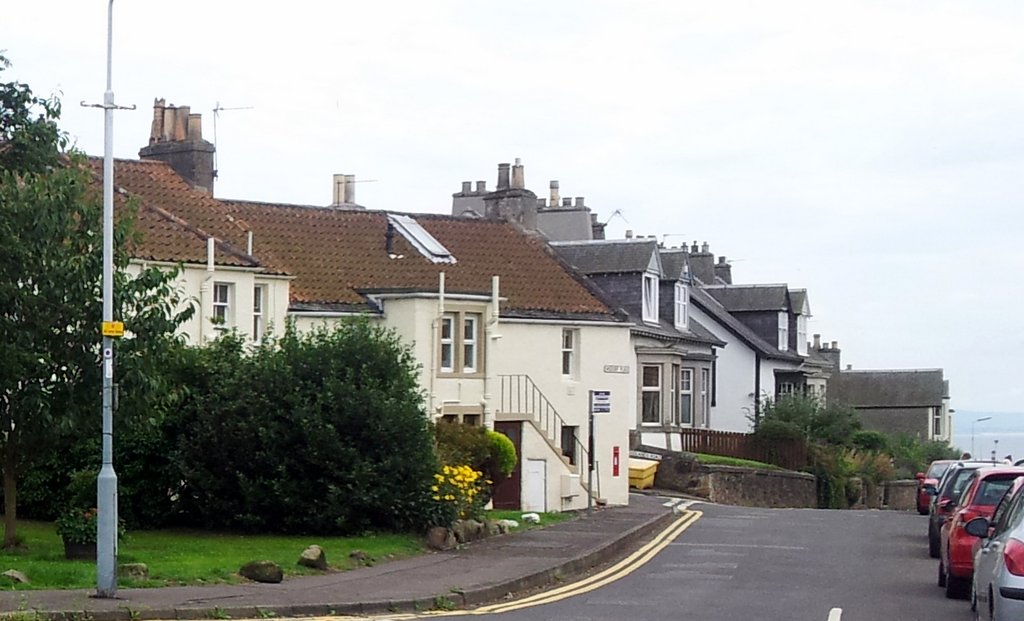
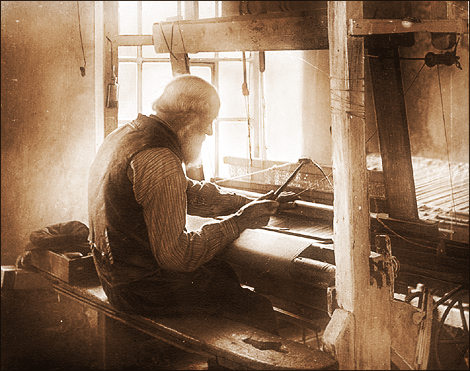
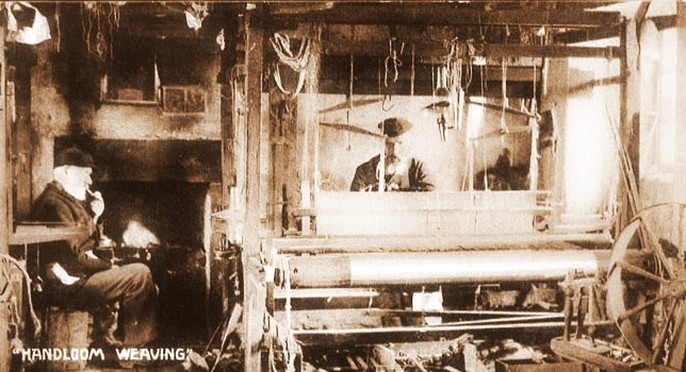
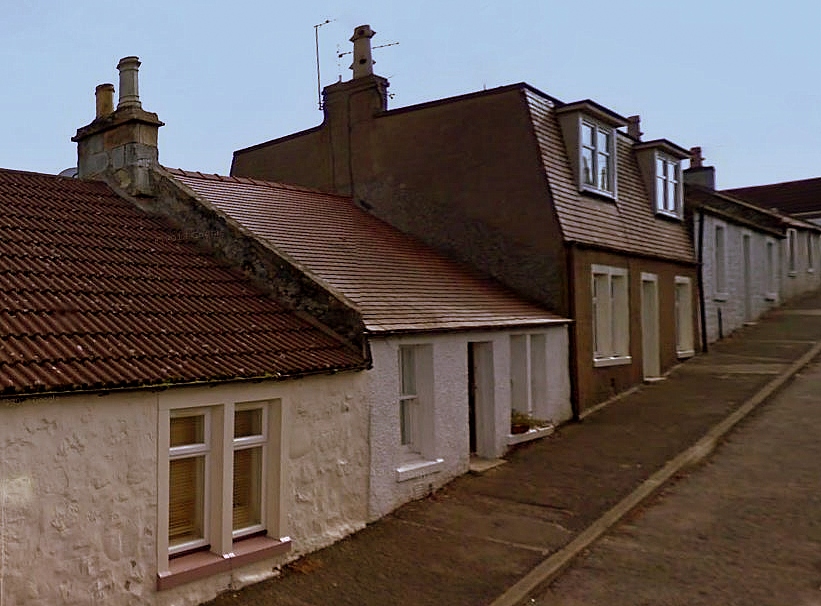
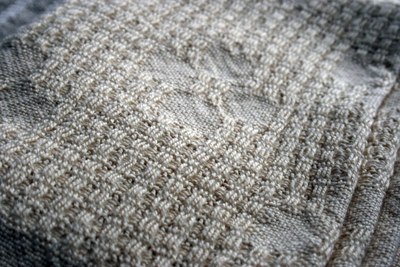
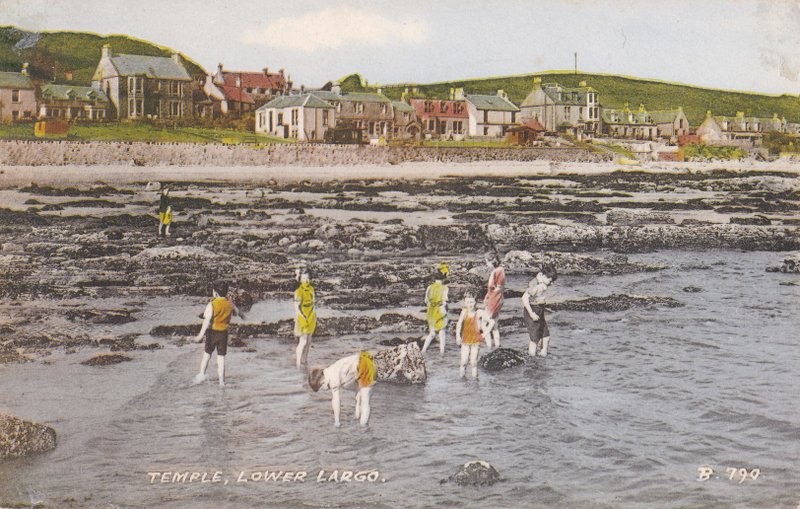
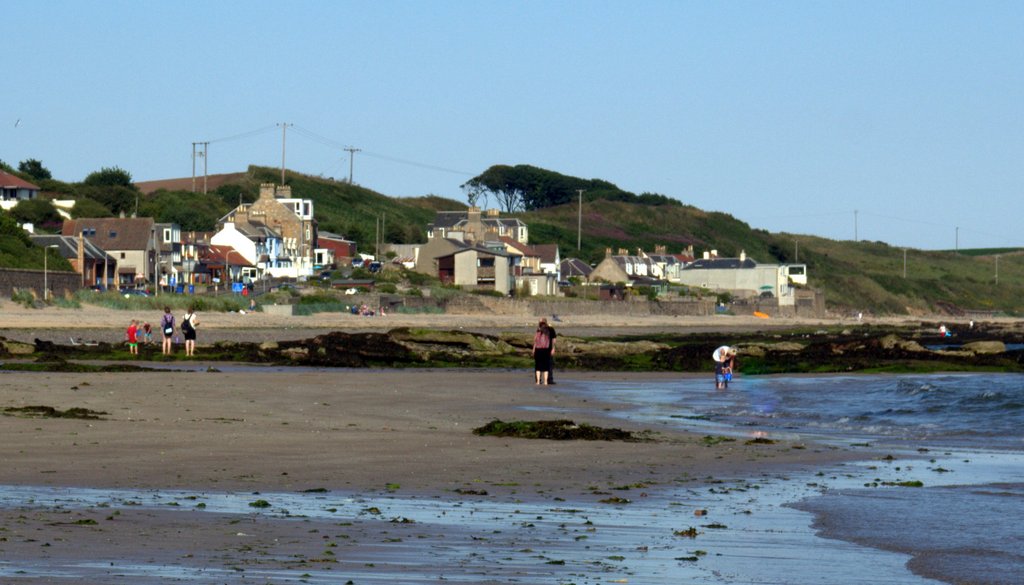
 RSS Feed
RSS Feed
